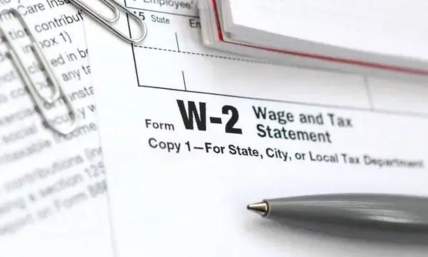Understanding Profit And Loss Reports - An In Depth Guide
Monitoring profit and loss is vital to every business.
A profit and loss statement (also referred to as an income statement) is a key document business managers need to see how well or not well the business is doing financially.
And the bottom line, literally, is where accurate bookkeeping of profits and losses tells you whether or not a business is making money, or losing it. And of course how much that profit or that loss is.
This makes it THE most important financial report should produce.
It can also prompt those analyzing it to spot matters that are perhaps costing the business too much money, and make strategic budgeting decisions to rectify it.
And it can be used to compare how well one financial year has gone against the previous year, and it can also be used to make projections for the next year, or even the next few years.
But you don’t need to be afraid that it’s difficult to understand. It’s actually pretty basic and straightforward.
This article is going to walk you through the key things you need to know about profit and loss statements. And I can assure you that by the end of the article, it won’t feel at all daunting.
What’s more, we’ve even included a section on troubleshooting, so if the profit and loss report shows a loss, then you may have some idea of why that could be.
Here goes.
Also read: How To Calculate Contribution Margin

Calculating Profit Or Loss
A business is either making money and taking a profit, or it is losing money and making a loss. It’s either one or the other.
Here’s how you work it out:
-
Add up all the money that came in that month (income)
-
Add up all the money that was spent that month (expenses)
-
Work out the difference between the two by taking the total expenses away from the total income
What you get will either be :
-
a positive number, and therefore a profit, or
-
A negative figure, preceded by a negative sign, and therefore a loss
Quite often, profit figures are printed in black, and loss figures are printed in red.
Here’s a simple example:
| Income | $1,000.00 |
| Less Expenses | $750.00 |
| Profit | $250.00 |
Also read: How to Save Money on Utilities
The Two Types Of Profit
In a profit and loss report, there are two types of profit that you need to know about:
To get the gross profit, you need to deduct the cost of goods sold from the income.
To get the net profit, you need to deduct expenses from the gross profit.
Here’s a little example for you:
| Income | $1,000.00 |
| Less: Cost Of Goods Sold | $450.00 |
| Gross Profit | $550.00 |
| Less: Expenses | $300.00 |
| Net Profit | $250.00 |
Quick tip - While having a loss means not having to pay tax, this is generally considered to be bad business.
Also read: What is Unearned Revenue?

Troubleshooting: What If There’s A Loss?
Here’s a quick example of a profit and loss statement reporting a loss.
| Income | $1,000.00 |
| Less: Cost Of Goods Sold | $1,350.00 |
| Gross Loss | -$350.00 |
| Less: Expenses | $40.00 |
| Net Loss | -$75.00 |
If the profit and loss statement is showing a gross loss, basically, this is because the business isn’t making enough money to cover the cost of the overheads.
Here are some things that could cause this situation:
-
The mark-up is too low on the sales price of goods and/or services
-
The business if offering discounts to too many customers
-
Some of the direct costs aren’t being passed onto the customers (not being on-charged)
Also read: PPP Loan Forgiveness for Sole Proprietors
Income And Expenses
Profit and loss reports also lay out the figures of income and expenses.
Here’s what you need to know…
Income
Income on a profit and loss report includes income from the following sources:
-
The sale of products
-
The sale of services
-
Other funds
An example of other funds might be interest earned from a business savings account.
Also read: Does Paying Off Credit Cards Help Your Credit Score?
Expenses
Some expenses are included in a profit and loss report and others are not.
Deductible expenses, such as overheads, do go on. They are expenses that your tax department has approved the use of to reduce net profit.
This is because the amount of tax the business has to pay is calculated from the net profit.
The higher the profit, the higher the tax the business has to pay.
Non-deductible expenses are not shown on profit and loss statements, and they go on the balance sheet instead.
Here are some examples of non-deductible expenses:
-
Loan repayments
-
Owner’s drawings
-
Investments
-
Inventory

How Often To Calculate The Profit And Loss
An income statement or profit and loss report has to be prepared every single financial year, without fail, for tax purposes.
However, it wouldn’t be good business sense to only look into the profits of the business only once a year.
For that reason, it has become customary for businesses to produce a profit and loss report at a minimum of once a month.
If you think you would struggle to produce a profit and loss statement in-house every month, then I strongly recommend that you outsource its production to a qualified bookkeeper.
Not only would the bookkeeper prepare the report, but they will also explain to you what the figures show.
Quick note - There are some figures that won’t be mentioned on monthly reports, for example, the depreciation of fixed assets. But such things can and do affect the value of the business, and they will appear instead on the balance sheet. And when done correctly and accurately, the figures on the annual profit and loss report and balance sheet should balance.
Handy Glossary Of Alternative Bookkeeping Terms
Profit = Surplus
Loss = Deficit
Profit And Loss Statement = Income Statement
Income = Revenue = Total Sales
Cost Of Goods Sold = Cost Of Sales = Direct Costs
Wrap Up
So, now you know how easy it is to get your head around profit and loss reports.
What’s more, you’re now also in a position to get ready to prepare or to analyze profit and loss reports going forward.
Using our pay stub generator you can ensure that you are receiving quality pay stubs on a regular basis.















